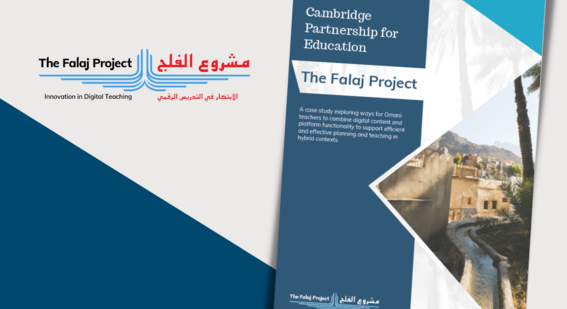In its 2011 ICT Competency Framework for Teachers, UNESCO argued that “it is not enough for teachers to have ICT competencies and be able to teach them to their students. "Teachers needed not only to know how to use ICT, but also “how to use ICT effectively in their teaching.”
In the decade since, and especially in the past two years, we’ve seen an explosion in EdTech offerings and deployments. HolonIQ, which tracks EdTech investments, notes that venture capital funding of EdTech went from $500 million in 2010 to $10 billion in the first six months of 2021 alone. They go on to state that EdTech expenditures could reach US$404 billion by 2025. The EdTech Hub currently lists more than 200 EdTech tools in its online database.
Matching EdTech to classroom learning needs
However, excitement from entrepreneurs and investors doesn’t translate to effectiveness in the classroom. Even in higher-income countries education is often underfunded and teachers are stretched for time. Funds and time allocated for professional development are limited. Therefore, many teachers will not have the opportunity to receive support, direction or information on the efficacy, usability and practices of proposed EdTech solutions.
Sadly, a commonly-observed aspect of EdTech deployment in the Global North is that schools or districts will make deployment decisions based on commercial displays at educational conferences without due consideration of whether the solution matches the:
- Requirements or goals of teachers
- Technology available to teachers
- Readiness of teachers to use the solution
The purchasing authority should therefore have a clear view of the justification for EdTech matched with clear evidence that the proposed solution is a good fit. It’s also important to remember that any solution (even one that appears to be low- or no-cost) will need regular updating and maintenance. Be sure to include the full costs of a potential EdTech deployment, which must include ongoing professional development and user support for teachers and staff.
The fast-moving nature of the tech industry means that, too often, schools are left with unsupported, proprietary software after the original company is bought, sold, or otherwise ends its support. Issues are compounded by the often-limited amount of IT support, particularly at primary level.
At the beginning of the pandemic, a large school system near Washington DC was forced to abandon a major EdTech platform when it was unable to cope with the increased demands of students learning from home. Deferred maintenance was identified as a key reason for the failure of the platform. Due to this failure, years of professional development were lost as teachers were forced to switch to new or alternative platforms within a matter of days.
Researchers based at Stanford University identified a distance learning program in China sponsored by an EdTech company as part of its corporate social responsibility (CSR) program. Although the program had been in place for a year by the time researchers visited, no training had been provided for this new EdTech software or infrastructure. The researchers identified one classroom from which audio could not be received by the teacher, as no one had been trained on maintenance or repair. This situation went on for a full school term. The culprit? A dead battery.
Teacher professional development for EdTech
Within a newly-published study, of more than 20,000 teachers from 165 countries, was this surprising finding – During the pandemic, experienced teachers used tech more than newly-qualified teachers. This counters the common assumption that technology or EdTech is more easily and frequently adopted by younger teachers and suggests that experienced teachers are open to EdTech solutions and willing to try them.
However, the same study also found that two of the top three needs (along with teacher wellness) identified by teachers today are:
- More professional development
- Better training to integrate technology into education.
This indicates that, while teachers are using technology in the classroom, they may lack understanding, confidence and skills in using the technology effectively to support teaching and learning. This speaks to the issue of EdTech being provided to teachers but limited training resources, if any, given to supporting the use of the EdTech in practice.
We can see this through a survey of rural and urban teachers in India which found that many teachers lacked technical proficiency or confidence, but that "close to 90% of teachers would be able to spend an average of 10 hours per week on self-study.” This shows the willingness of teachers to improve their technical capabilities. However, it should also be concerning that teachers have to spend a significant amount of time on self-study using the technology rather than being provided with structured and targeted professional development. Such professional development options would be more efficient and would upskill teachers and give them time to carry out other professional duties.
Bottom line: Teachers increasingly realise the need for technology in their classrooms and they want to learn how to do it better. They are also fully aware that their role is to adapt the technology to their unique classroom situation and are ready to engage with EdTech to achieve this. However, structured and targeted professional development on the EdTech is not always available.
Conclusion
Teachers, like everyone else, are aware of the need to prepare pupils for the modern world and to help them learn as efficiently as possible. They are keen to adopt technology to support these aims but require training to help them adapt it to their classrooms, where they are the experts.
Cautionary tales abound regarding the need to make sure that EdTech deployments are properly planned and funded on an ongoing basis, and that these budgets must include professional development for teachers and staff. The costs of professional development may be mitigated in part by increased access to, and acceptance of, remote learning opportunities for teacher training.
Author
Kevin Martin is a PhD candidate at the Faculty of Education, University of Cambridge, with research interests in dialogic education, EdTech, and international development. Kevin’s professional background lies at the intersection of social innovation and education, and he has spent much of the last 20 years working on related initiatives in East Africa. Prior to undertaking his doctoral research, he was an Assistant Professor of Business Administration and an Associate Dean at New England College.





